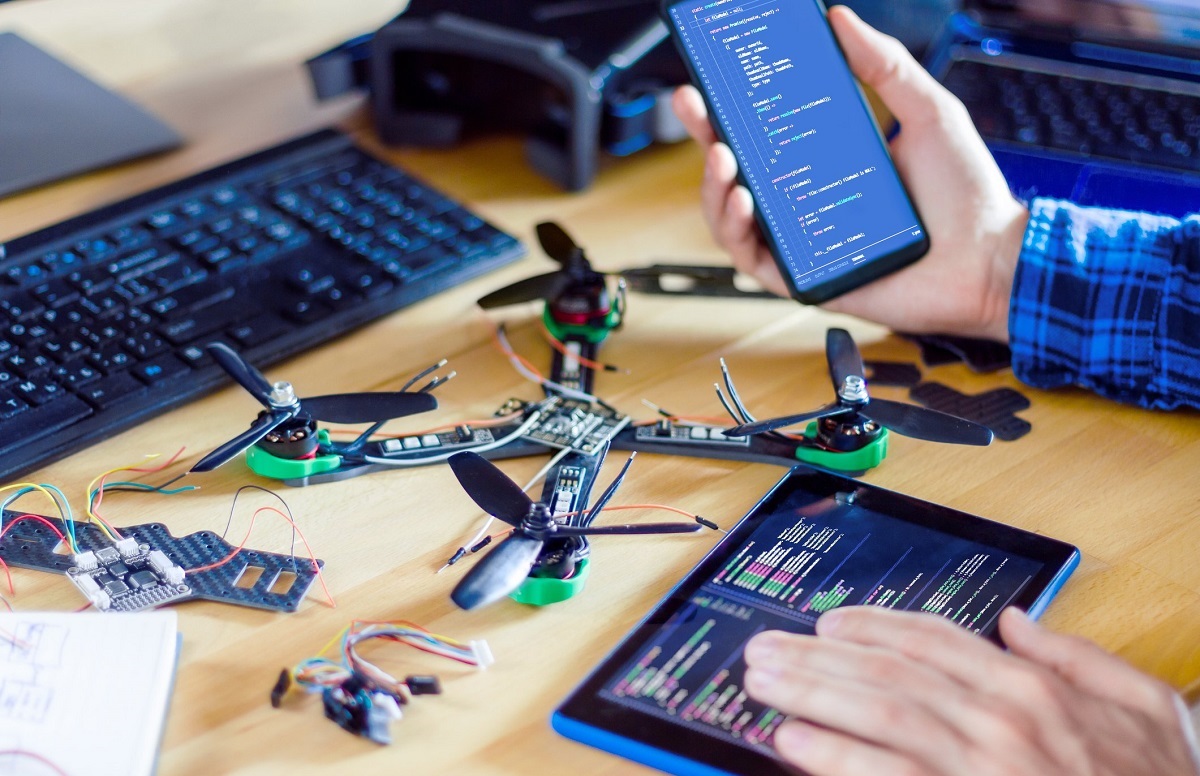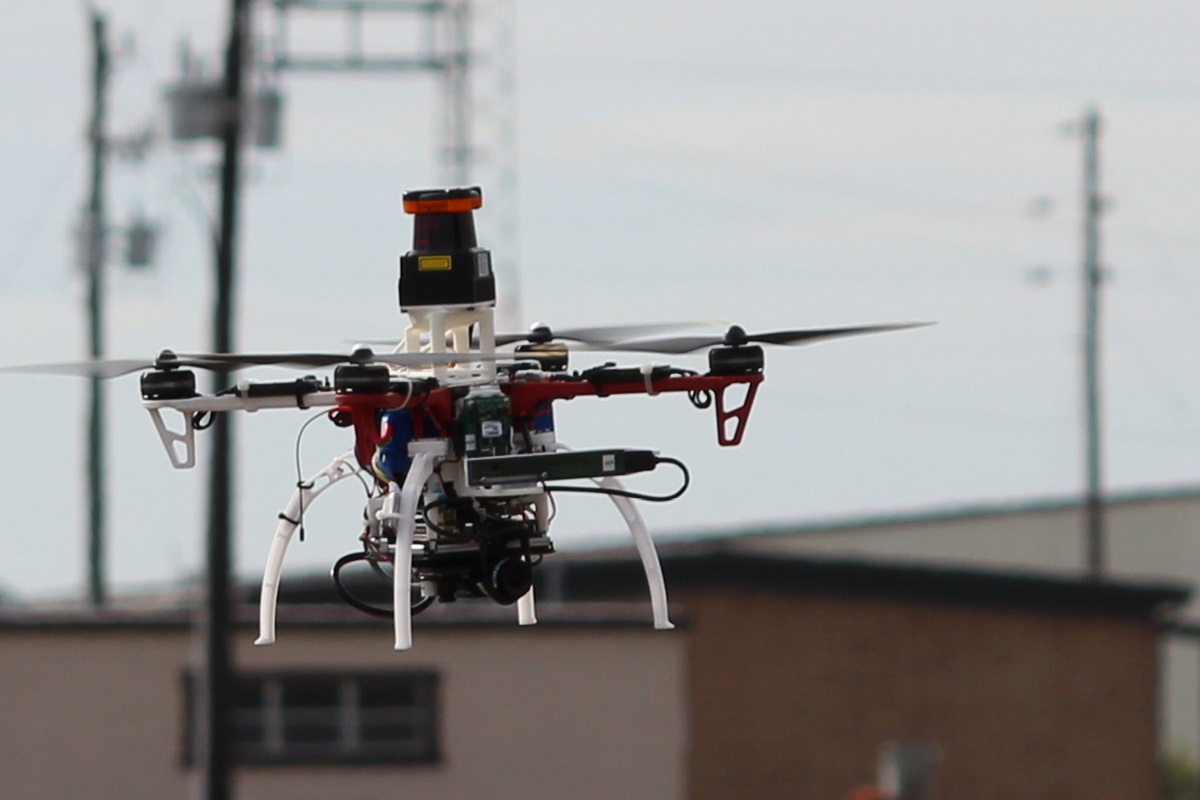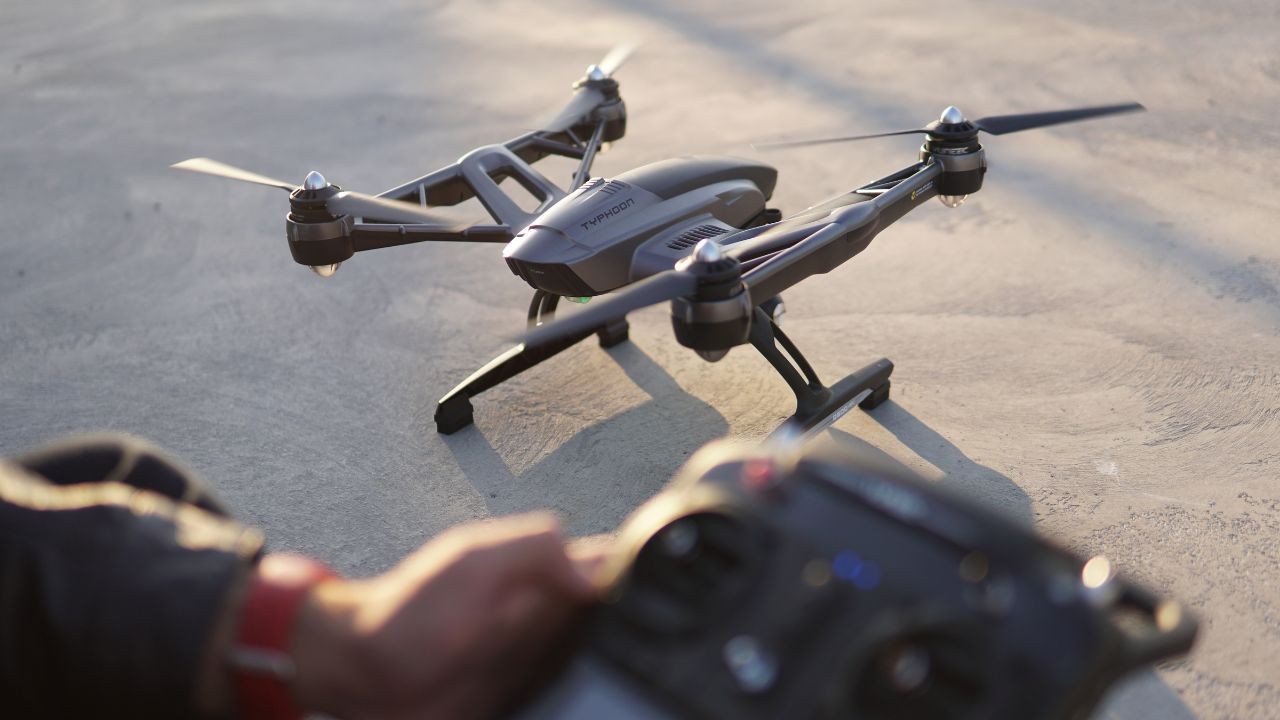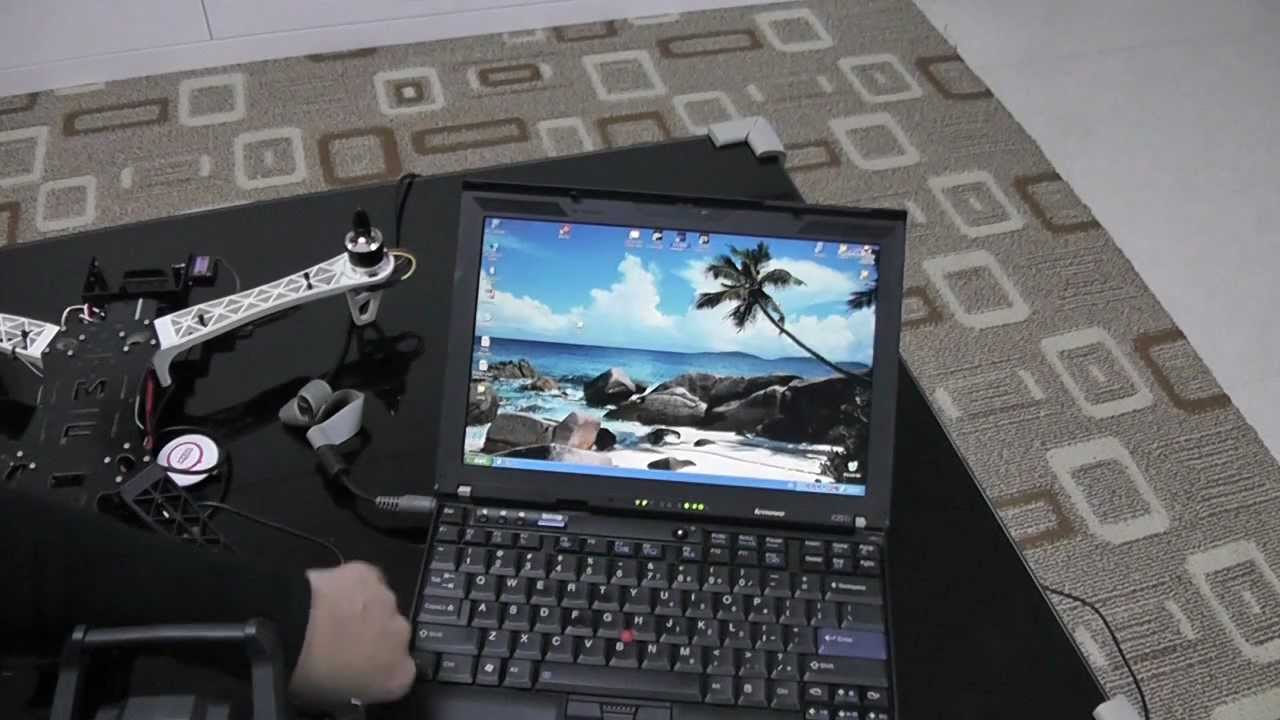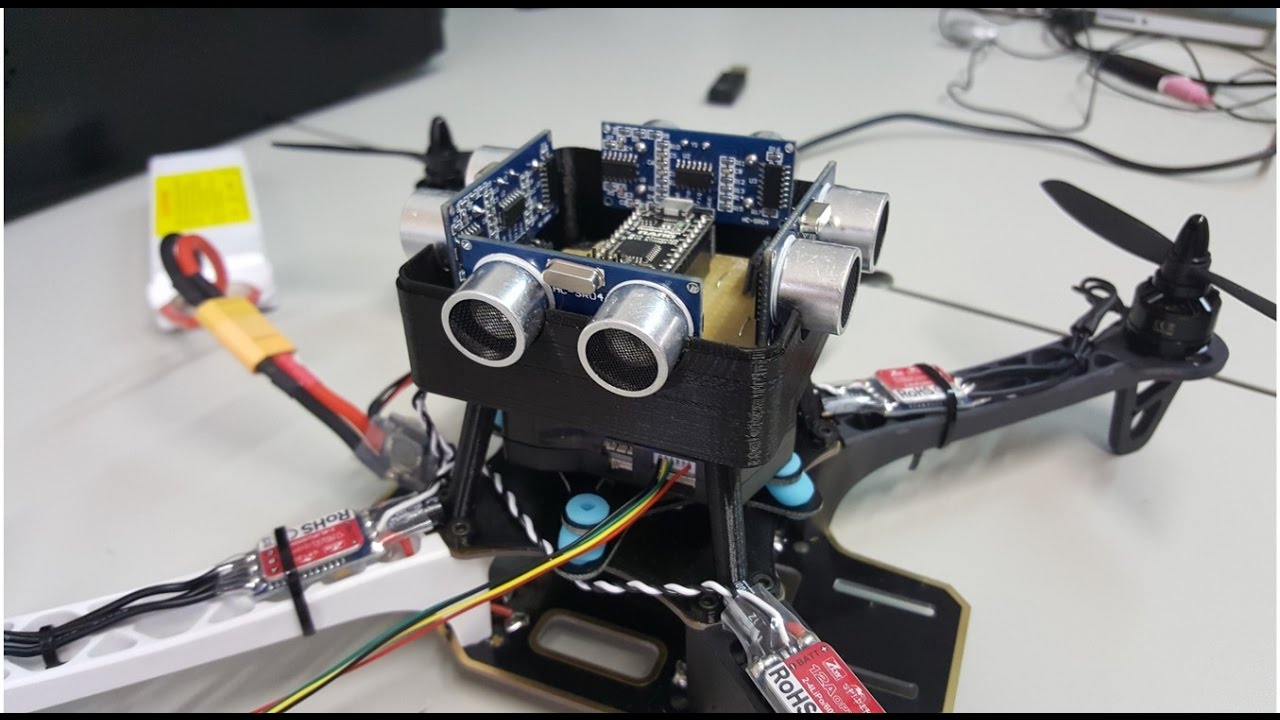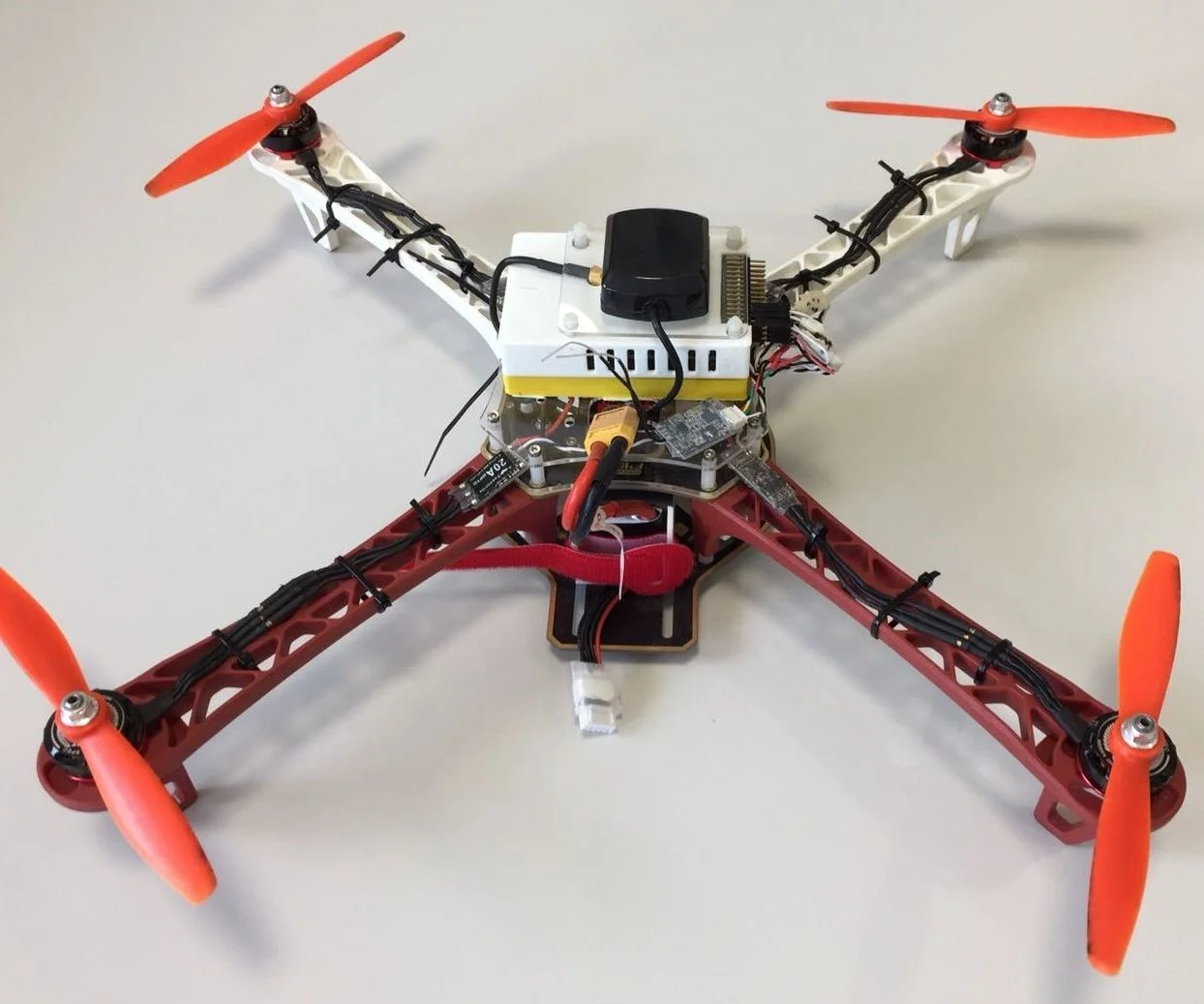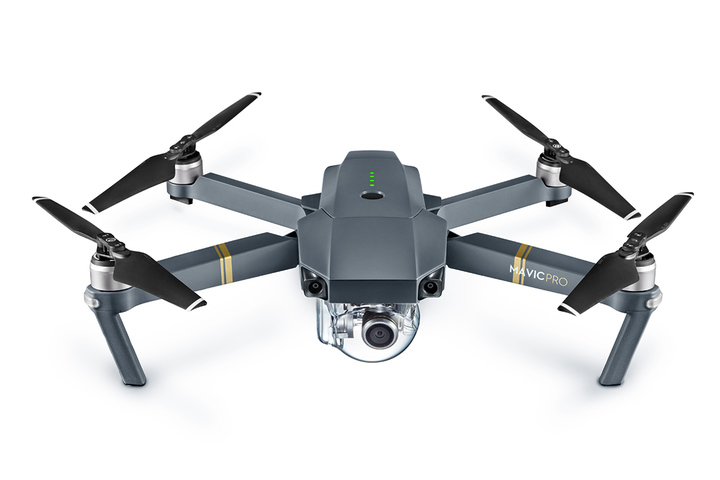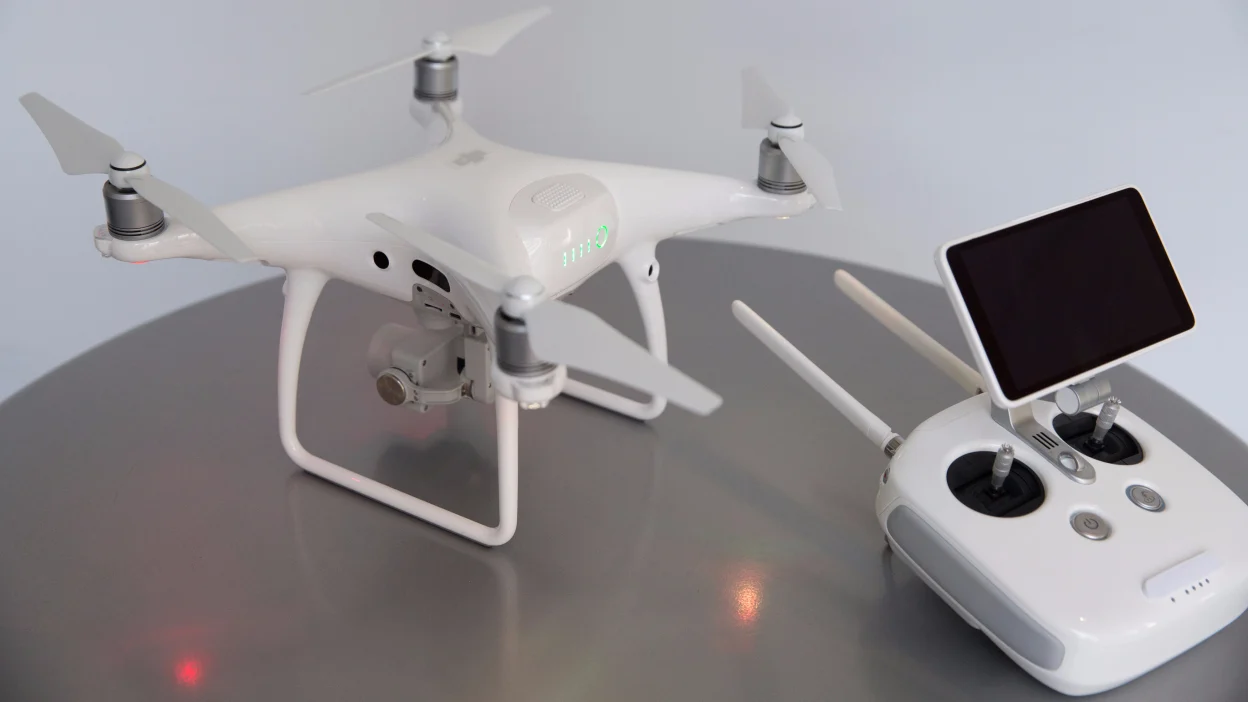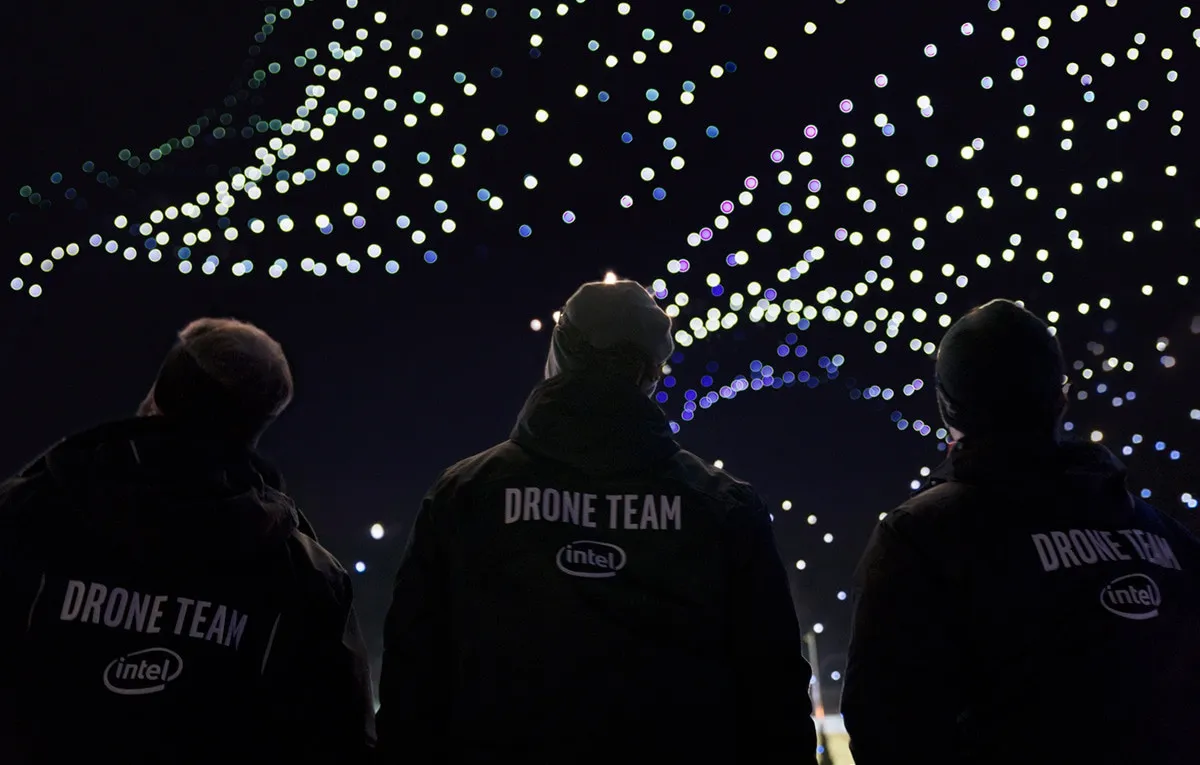Introduction
Welcome to the exciting world of drone programming! Drones, also known as unmanned aerial vehicles (UAVs), have become increasingly popular in recent years, thanks to their versatility and potential for various applications. From aerial photography and videography to package delivery and search and rescue operations, drones offer endless possibilities.
However, while flying a drone can be thrilling, programming a drone takes it to a whole new level. By delving into drone programming, you can unlock the potential to control and customize your drone’s movements, add sensors and controllers, and even make it autonomous. Whether you’re a hobbyist, a student, or a professional in the field, learning how to program a drone opens up a world of opportunities.
But where do you start? With a wide range of drones available on the market, choosing the right one for your programming endeavors is crucial. Factors such as flight capabilities, programming compatibility, and budget all come into play when deciding on the perfect drone. In this article, we will guide you through the process of selecting a drone, understanding the basics of drone programming, and getting started with programming movements and adding sensors to your drone.
Before we dive into the technical aspects of drone programming, it’s essential to familiarize yourself with the basic components of a drone. Drones typically consist of a frame, motors, propellers, an onboard flight controller, and a battery. The flight controller acts as the brain of the drone, interpreting commands and coordinating the movements of the motors and propellers to achieve flight.
To program a drone, you’ll need to have a solid understanding of programming languages. Fortunately, there are several programming languages specifically designed for drone programming, such as Python, JavaScript, and C++. These languages provide the necessary interface to communicate with the flight controller and control the drone’s movements.
In the following sections, we’ll walk you through the process of setting up your drone, choosing the right programming language, and getting started with coding your drone’s movements. We’ll also explore the exciting possibilities of adding sensors and controllers to make your drone more autonomous. So, fasten your seatbelt and get ready to take off into the world of drone programming!
Choosing a Drone
When it comes to drone programming, choosing the right drone for your needs is a crucial first step. With a wide range of options available on the market, it’s essential to consider various factors before making your decision.
First and foremost, consider your budget. Drones can vary significantly in price, ranging from affordable consumer models to high-end professional drones. Determine how much you’re willing to invest in a drone for programming purposes, keeping in mind that more advanced features and capabilities often come with a higher price tag.
Next, think about your programming goals. Are you looking to learn the basics of drone programming or develop advanced applications? Different drones offer varying levels of programmability, so it’s important to assess whether a particular drone’s capabilities align with your programming aspirations.
Flight capabilities are another crucial factor to consider. Some drones are designed for beginners and offer stability and ease of use, while others are more geared towards experienced programmers who want to explore advanced flight maneuvers. Consider the type of flying experience you’re looking for and choose a drone with the appropriate flight capabilities.
Compatibility with programming languages is also an essential consideration. While most modern drones can be programmed using popular programming languages like Python, JavaScript, and C++, it’s a good idea to check if the drone you’re interested in supports the specific programming language you’re comfortable with or eager to learn.
Additionally, consider the availability of software development kits (SDKs) and application programming interfaces (APIs) for the drone model you’re considering. These resources can greatly simplify the process of programming your drone by providing pre-built functions and libraries that handle common tasks and interactions with the drone’s hardware.
Finally, don’t forget to read reviews and gather feedback from other drone enthusiasts. Online forums, communities, and social media groups can provide valuable insights into the performance, reliability, and overall user experience of different drone models. Hearing from others who have already delved into drone programming can help you make an informed decision.
By carefully considering your budget, programming goals, flight capabilities, compatibility with programming languages, and user feedback, you can select a drone that best suits your needs. Remember, choosing the right drone is the first step towards an exciting journey into the world of drone programming!
Understanding the Basics
Before diving into drone programming, it’s essential to have a solid understanding of the basic concepts and components that make up a drone. This knowledge will provide a strong foundation for your programming endeavors and help you make sense of the code and commands you’ll be working with.
At its core, a drone consists of several essential components. These include a frame, motors, propellers, an onboard flight controller, and a battery. The frame serves as the structure that holds everything together and provides stability during flight. Motors and propellers are responsible for generating the thrust needed to lift the drone off the ground and control its movement in the air.
The flight controller is the brain of the drone. It is a small electronic device that houses sensors and processors responsible for interpreting commands and controlling the motors and propellers to achieve stable flight. The flight controller receives input from the pilot or the programmed instructions and makes real-time adjustments to maintain stability and responsiveness.
In addition to these core components, drones often come equipped with various sensors, such as accelerometers, gyroscopes, GPS, and barometers. These sensors provide crucial data about the drone’s orientation, speed, altitude, and position in the sky. They play a vital role in ensuring accurate flight control and enable advanced features like autonomous flight and obstacle avoidance.
Understanding the basics of drone flight is also essential. Drones can move in different directions: up and down (altitude control), forward and backward (pitch control), side to side (roll control), and rotate clockwise or counterclockwise (yaw control). These movements are achieved by adjusting the speed and rotation of the motors and propellers.
It’s important to note that drones rely on a variety of control modes. In manual mode, the pilot has full control over the drone’s movements and must actively maneuver it. In other modes, such as GPS mode or altitude hold mode, the drone utilizes its onboard sensors and GPS to maintain a stable position and altitude, requiring less direct control from the pilot.
By grasping these fundamental concepts of drone components, flight controllers, sensors, and basic flight maneuvers, you’ll be better prepared to dive into drone programming. Armed with this knowledge, you’ll have a clearer understanding of how your code and commands translate into real-world drone movements and behaviors.
Setting Up Your Drone
Once you have chosen the right drone for your programming endeavors, it’s time to set it up for programming. Properly setting up your drone ensures that you have a smooth and hassle-free experience when it comes to programming and controlling your drone’s movements.
The first step in setting up your drone is to carefully read and follow the manufacturer’s instructions. Each drone may have specific setup procedures and guidelines that you need to adhere to. Familiarize yourself with the drone’s components, assembly process, and any specific precautions or safety measures recommended by the manufacturer.
Next, ensure that your drone’s firmware is up to date. Manufacturers often release firmware updates to improve performance, stability, and security. By updating your drone’s firmware, you can take advantage of the latest features and bug fixes that may be crucial for smooth programming and operation.
Before taking your drone for its maiden flight, it’s essential to calibrate its sensors. Sensor calibration ensures that the drone’s internal sensors are accurately detecting the drone’s orientation, altitude, and other flight parameters. Refer to the manufacturer’s instructions on how to calibrate your drone’s sensors correctly.
Once your drone is set up and calibrated, it’s time to establish a connection between your drone and the programming environment. Most drones provide a wireless connection option, typically using Wi-Fi or Bluetooth, for communication with a ground control station or programming software.
Depending on the drone model and software compatibility, you may need to install dedicated programming software or use generic programming environments that support drone programming libraries. Consult the drone’s user manual or the manufacturer’s website for instructions on how to connect and establish communication between your drone and the programming software.
It’s also worth mentioning that some drones offer a simulation mode, allowing you to practice programming and test your code without actually flying the drone. This can be a valuable feature for beginners or for testing complex maneuvers and behaviors before executing them in real-flight scenarios.
Lastly, don’t forget to prioritize safety during the setup process. Ensure that your drone is fully charged before each flight and follow local regulations regarding drone flying. Find an open and suitable outdoor location, away from people, buildings, and obstructions, for your initial flights and programming experiments.
By carefully following the setup procedures provided by the manufacturer, updating firmware, calibrating sensors, establishing a connection with the programming environment, and prioritizing safety, you’ll be well-prepared to embark on your drone programming journey.
Programming Languages for Drones
When it comes to programming drones, having a solid understanding of programming languages is essential. Programming languages serve as the bridge between your ideas and the drone’s flight controller, allowing you to send commands and instructions to control your drone’s movements and behavior.
Several programming languages are commonly used in drone programming, each with its own advantages and considerations. Let’s explore some of the popular programming languages used in the drone programming landscape:
- Python: Python is a versatile and beginner-friendly programming language widely used in various domains, including drone programming. Its clear and readable syntax makes it an excellent choice for beginners. Python offers numerous libraries and frameworks specifically designed for drone programming, such as Dronekit and Pygame, providing powerful tools for controlling drones and developing drone applications.
- JavaScript: JavaScript is a popular programming language known for its versatility and its integration with web technologies. It can be used for both front-end and back-end development and is also widely adopted in drone programming. Libraries like Node.js and libraries compatible with specific drone models make JavaScript a compelling choice for controlling drones and developing web-based drone applications.
- C++: C++ is a powerful, low-level programming language commonly used for drone programming due to its efficiency and high performance. It allows direct access to hardware components and offers extensive control over low-level drone functions. Many drone flight controllers provide C++ APIs for direct interaction with the drone’s firmware.
- Java: Java is a widely-used programming language known for its platform independence and robustness. It is favored by developers who seek to build large-scale applications, including drone control and management systems. Java’s versatility, extensive libraries, and frameworks make it suitable for both drone programming and developing drone-related software.
- Simulink/MATLAB: Simulink/MATLAB is a visual programming environment commonly used for model-based design and simulation. It provides a graphical interface for designing control algorithms and simulating drone behavior. Many drone manufacturers offer Simulink/MATLAB integration, enabling users to develop and test complex algorithms before deploying them on an actual drone.
Choosing the right programming language for your drone programming endeavors depends on various factors, including your programming expertise, the drone’s compatibility with specific languages, and the requirements of your drone projects. Consider your familiarity with the programming language, the availability of libraries and frameworks for drone programming, and the level of control and customization you need for your drone.
A combination of multiple programming languages is often used in drone projects. For example, Python can be used for high-level control and mission planning, while C++ is used for low-level control and hardware interaction. It’s important to understand the strengths and limitations of each language and select the one that aligns best with your project goals and requirements.
Ultimately, mastering a programming language for drone programming requires practice, experimentation, and continuous learning. With the right language in your toolbox, you’ll be ready to take off and explore the exciting world of drone programming.
Getting Started with Drone Programming
Now that you have your drone set up and have chosen a programming language, it’s time to dive into the world of drone programming. Getting started with drone programming may seem daunting at first, but with the right approach and resources, you’ll be well on your way to creating customized drone movements and behaviors.
The first step in getting started with drone programming is to familiarize yourself with the programming environment. Install the necessary software and libraries or set up the programming interface that your drone supports. Take some time to explore the documentation and resources provided by the drone manufacturer or the programming community.
Next, start with the basics. Learn how to send simple commands to control your drone’s movements. For example, you can start by programming your drone to take off, hover at a certain altitude, and then land. Experiment with different commands and parameters to get a feel for how the drone responds to your code.
Once you are comfortable with the basics, expand your knowledge by exploring more advanced topics. Dive into programming autonomous flight paths, such as waypoints or predefined paths, where the drone can fly without direct control. Learn how to integrate sensors and process their data to make decisions and adjust the drone’s movements in real-time.
Utilize the vast resources available online to enhance your learning experience. Online tutorials, documentation, and forums dedicated to drone programming are an excellent way to gain insights, discover tips and tricks, and engage with the programming community. Consider joining local drone enthusiast groups or attending workshops to connect with like-minded individuals and learn from their experiences.
Moreover, don’t forget to practice regularly. Just like any other programming skill, consistent practice is key to improving your drone programming abilities. Set aside dedicated time to work on programming challenges, experiment with new features, and refine your code to achieve the desired drone behaviors.
As you gain more experience, consider taking on more complex drone programming projects. For example, you could develop a drone-based photography or videography application, create a drone swarm that operates in a coordinated manner, or even build your own custom drone from scratch. These projects will challenge you and allow you to explore the full potential of drone programming.
Remember, drone programming is a continuous learning process. As technologies evolve and new advancements in drone programming emerge, stay updated with the latest trends and techniques. Embrace the opportunity to learn and adapt, and don’t shy away from exploring innovative approaches to achieve the desired drone behaviors.
With determination, perseverance, and a passion for drones and programming, you’ll be well-equipped to embark on an exciting journey into the world of drone programming.
Programming Drone Movements
One of the most exciting aspects of drone programming is the ability to control and program the movements of your drone. By using programming languages, you can send commands and instructions to your drone’s flight controller, enabling you to create customized movements and flight paths. Let’s explore how you can program different types of drone movements.
Basic Movements: The fundamental drone movements include moving up and down (altitude control), flying forward and backward (pitch control), moving sideways (roll control), and rotating clockwise or counterclockwise (yaw control). You can program these movements by adjusting the drone’s motor speeds and propeller rotations accordingly. Experiment with different combinations and durations of these movements to create fluid and controlled flight patterns.
Waypoint Navigation: Waypoint navigation involves programming your drone to follow a predefined path or sequence of GPS coordinates. By specifying latitude, longitude, and altitude values, you can create a flight plan with multiple waypoints. The drone then autonomously navigates through these waypoints, allowing you to create complex flight paths and capture dynamic aerial footage or collect data over specific areas.
Aerial Photography and Videography: Drones have revolutionized aerial photography and videography, allowing for stunning shots and perspectives. By programming your drone’s movements, you can capture cinematic shots, including bird’s-eye views, panoramic sweeps, and revealing flyovers. Experiment with predefined flight patterns, synchronized movements, and camera control to capture the perfect shot.
Avoidance and Obstacle Detection: Many advanced drones offer built-in sensors and capabilities to avoid obstacles and maintain a safe flight path. By utilizing these sensors and programming algorithms, you can create intelligent drone movements that detect and avoid obstacles in real-time. This feature is especially crucial for autonomous drones or drones used in complex environments.
Formation Flying and Swarm Control: Programming drones to fly in formation or as part of a swarm opens up new possibilities. By synchronizing flight patterns and behaviors, drones can perform coordinated movements, create captivating aerial displays, or collaborate on complex tasks. This area of drone programming requires advanced coordination algorithms and communication protocols.
Interactive and Gestural Control: Another exciting area of drone programming involves controlling drones through interaction and gestures. By integrating sensors, such as motion sensors or image recognition cameras, you can program your drone to respond to specific hand gestures, voice commands, or other interactive inputs. This allows for unique and engaging drone control experiences.
When programming drone movements, keep in mind safety precautions and local regulations. Ensure that your drone movements do not pose risks to people, property, or airspace. Additionally, always test and fine-tune your programmed movements in a controlled environment before attempting them in unfamiliar or crowded areas.
Remember, drone movements can be programmed using a variety of programming languages. Familiarize yourself with the specific syntax and libraries associated with your chosen language to effectively program your desired drone movements. Keep experimenting, learning, and refining your code to achieve the desired movements and unlock the full potential of drone programming.
Adding Sensors and Controllers
Adding sensors and controllers to your drone can greatly enhance its capabilities, allowing for advanced functionalities and autonomous operations. By integrating various sensors and controllers, you can gather real-time data, make informed decisions, and create more intelligent and responsive drone behaviors. Let’s explore some of the common sensors and controllers used in drone programming.
GPS: Global Positioning System (GPS) sensors enable accurate positioning and navigation capabilities for drones. By receiving signals from multiple satellites, drones can determine their precise location and altitude. GPS data can be utilized to create waypoint-based flight plans, implement geofencing for safe operating boundaries, and enable Return-To-Home (RTH) functionality.
Accelerometer and Gyroscope: Accelerometers and gyroscopes are essential motion sensors used in drones. They provide data on the drone’s orientation, angular velocity, and acceleration. By analyzing this data, drones can maintain stable flight, detect changes in motion, and make adjustments to their movements. These sensors play a crucial role in stabilizing the drone and ensuring accurate control.
Barometer: Barometric sensors measure atmospheric pressure changes, which can be used to estimate the drone’s altitude. By detecting changes in air pressure, drones can adjust their altitude, maintain stable flight, and perform tasks that require precise altitude control. Barometers are particularly useful when GPS signals are unavailable or less accurate.
Obstacle Detection and Avoidance: Drones can be equipped with various sensors, including ultrasonic, infrared, lidar, or even cameras, to detect and avoid obstacles. These sensors provide valuable data about the drone’s surroundings, allowing it to detect and steer clear of objects in its flight path. Obstacle detection and avoidance sensors are crucial for safe and autonomous drone operations.
Camera and Imaging Systems: Cameras and imaging systems are popular additions to drones, enabling aerial photography, videography, mapping, and inspection tasks. By integrating cameras with programmable control, you can program your drone to capture images or record videos at specific times, locations, or orientations. Image processing and computer vision algorithms can also be applied to analyze and extract information from captured images.
Flight Controllers: Flight controllers are the central processing units responsible for interpreting commands, controlling motor outputs, and managing the overall operation of the drone. In addition to the onboard flight controller, external flight controllers, such as Arduino or Raspberry Pi, can be integrated to expand the drone’s capabilities and provide additional computational power for advanced programming tasks.
Remote Controllers: Remote controllers play a vital role in controlling and piloting drones. They provide a wireless connection between the pilot or operator and the drone, allowing for real-time control and communication. Some remote controllers even offer programmable buttons or switches that can be customized for specific actions or flight modes.
When incorporating sensors and controllers into your drone, consider the compatibility and communication protocols required. Ensure that the sensors and controllers you choose are compatible with your drone’s hardware and can be easily integrated into your programming environment.
Experimenting with different combinations of sensors and controllers opens up a world of possibilities for drone programming. By using the data collected by the sensors and leveraging the capabilities of the controllers, you can create autonomous and intelligent drone behaviors. Whether it’s obstacle avoidance, precise altitude control, or advanced imaging capabilities, adding sensors and controllers can take your drone programming to new heights.
Autonomous Drones
Autonomous drones are a fascinating and rapidly advancing field within drone technology. These drones are capable of operating independently with minimal or no human intervention, making them highly versatile in a variety of applications. By incorporating advanced programming, artificial intelligence, and sensor technologies, autonomous drones can perform complex tasks, navigate challenging environments, and adapt to changing conditions. Let’s explore the key aspects of autonomous drones.
Intelligent Decision-Making: Autonomous drones rely on intelligent decision-making algorithms to process sensor data, determine the optimal course of action, and respond to different situations. Machine learning and artificial intelligence techniques can be employed to analyze data and make real-time decisions based on predefined rules or learned patterns. This enables drones to adapt to dynamic environments and perform tasks efficiently.
Waypoint Navigation and Mission Planning: Waypoint-based navigation is a fundamental feature of autonomous drones. By predefining a set of GPS coordinates as waypoints, drones can autonomously navigate along a designated path, performing tasks such as surveillance, mapping, or inspections. Mission planning allows operators to define more complex missions that involve multiple waypoints and specific actions or tasks at each point.
Obstacle Detection and Avoidance: To ensure safe and autonomous operations, obstacle detection and avoidance play a crucial role. Drones equipped with sensors such as cameras, lidar, or ultrasonic sensors can detect obstacles in their flight path and adjust their trajectory to avoid collisions. The ability to perceive and respond to obstacles enables autonomous drones to conduct missions in complex and dynamic environments with a high level of reliability and safety.
Machine Vision and Object Recognition: Autonomous drones can be programmed to recognize and interact with objects in their environment. With the help of computer vision techniques, drones can identify objects, track their movements, or even perform actions based on what they perceive. This opens up possibilities for applications such as package delivery, search and rescue operations, or inventory management.
Fully Autonomous and Swarm Operation: While individual autonomous drones exhibit impressive capabilities, the concept of swarm operation takes autonomous drones to another level. Swarm operation involves a group of drones working collectively, coordinating their movements, and collaboratively accomplishing tasks. This collective intelligence allows for distributed sensing, efficient utilization of resources, and the ability to tackle complex missions that would be difficult for a single drone to accomplish.
Ethical and Legal Considerations: As with any emerging technology, autonomous drones raise ethical and legal considerations. Privacy concerns, potential misuse, and safety regulations are important factors to consider. Governments and regulatory bodies are actively defining rules and regulations to govern the use of autonomous drones to ensure responsible and safe operations.
Autonomous drones have a wide range of potential applications across industries, including agriculture, construction, surveying, surveillance, and more. As technology advances and new algorithms and sensors emerge, the capabilities of autonomous drones will continue to expand, enabling even more complex and intelligent autonomous operations in the future.
Testing and Troubleshooting
Testing and troubleshooting are essential aspects of drone programming to ensure proper functionality, performance, and safety during flight operations. By following best practices for testing and effectively troubleshooting issues, you can identify and resolve problems early on, leading to a smoother and more successful drone programming experience. Let’s explore some key considerations for testing and troubleshooting your drone programming code.
Unit Testing: Unit testing involves testing individual components or functions of your code in isolation. By breaking down your code into smaller units, you can verify their functionality and correctness. Create test cases and assertions to ensure that each unit of code performs as expected. Unit testing allows you to catch errors or bugs early on, making it easier to identify the root cause of issues.
Simulations and Emulators: Simulations and emulators provide a virtual environment to test your drone programming code without the risk of damaging your drone or causing accidents. Using specialized software, you can simulate various flight scenarios, test different algorithms, and observe how the drone responds. Simulations enable you to refine control algorithms and assess the performance of your code before deploying it on a physical drone.
Field Testing: Field testing involves taking your drone to an appropriate outdoor location and conducting real-world flight tests. This allows you to assess the behavior of your code under real conditions, evaluate flight performance, and validate the accuracy of your programmed movements. During field testing, monitor the drone closely, observe any unexpected behavior or deviations from expected results, and take note of any issues that arise.
Data Logging and Analysis: Incorporating data logging capabilities into your code allows you to record and log sensor data, flight parameters, and other relevant information during field testing. After a test flight, you can analyze the logged data to identify anomalies, performance patterns, or potential areas of improvement. Data analysis serves as a valuable tool for troubleshooting and optimizing your code.
Error Handling and Debugging: When issues arise, proper error handling and debugging techniques are crucial for effective troubleshooting. Implement error handling mechanisms in your code to catch and handle potential errors or exceptions. Utilize debugging tools and techniques provided by your programming environment to identify and fix bugs, step through code execution, and track variable values during runtime.
Collaboration and Documentation: Maintain thorough documentation of your code and any modifications or changes made during the testing and troubleshooting process. Documenting the steps taken, issues encountered, and their resolutions can help you reproduce successful results and collaborate with others more effectively when seeking assistance or sharing knowledge.
Continuous Improvement: Drone programming is an ongoing learning process. Regularly review and analyze the results of your testing and troubleshooting efforts. Reflect on the lessons learned and apply those insights to refine your code, improve performance, enhance safety measures, and optimize the drone’s behavior. Continuous improvement is key to achieving better results with each iteration.
Remember, testing and troubleshooting should be an integral part of your drone programming workflow. By incorporating systematic testing approaches, utilizing simulations, conducting field tests, effectively debugging your code, and continuously seeking ways to improve, you can ensure the reliability, stability, and safety of your drone programming projects.
Conclusion
Drone programming opens up a world of possibilities, allowing you to customize and control the movements and behaviors of your drone. By choosing the right drone, understanding its components, selecting an appropriate programming language, and utilizing sensors and controllers, you can create unique and intelligent drone experiences.
Throughout this article, we’ve explored the foundational aspects of drone programming, from choosing a drone and understanding its basics to setting it up for programming and programming its movements. We’ve also delved into the importance of adding sensors and controllers to enhance your drone’s capabilities and the exciting realm of autonomous drones. Additionally, we discussed crucial aspects of testing and troubleshooting to ensure optimal performance and safety.
As you embark on your drone programming journey, it’s important to remember that practice, experimentation, continuous learning, and keeping up with technological advancements are key to honing your skills. Join online communities, collaborate with fellow drone enthusiasts, and stay up to date with the latest programming techniques and drone technologies to unlock the full potential of your drone programming projects.
Whether you’re a hobbyist exploring the art of drone photography or a professional seeking innovative solutions in various industries, drone programming offers a limitless range of opportunities. Develop your programming skills, push the boundaries of what a drone can do, and let your creativity soar with the art of drone programming!







